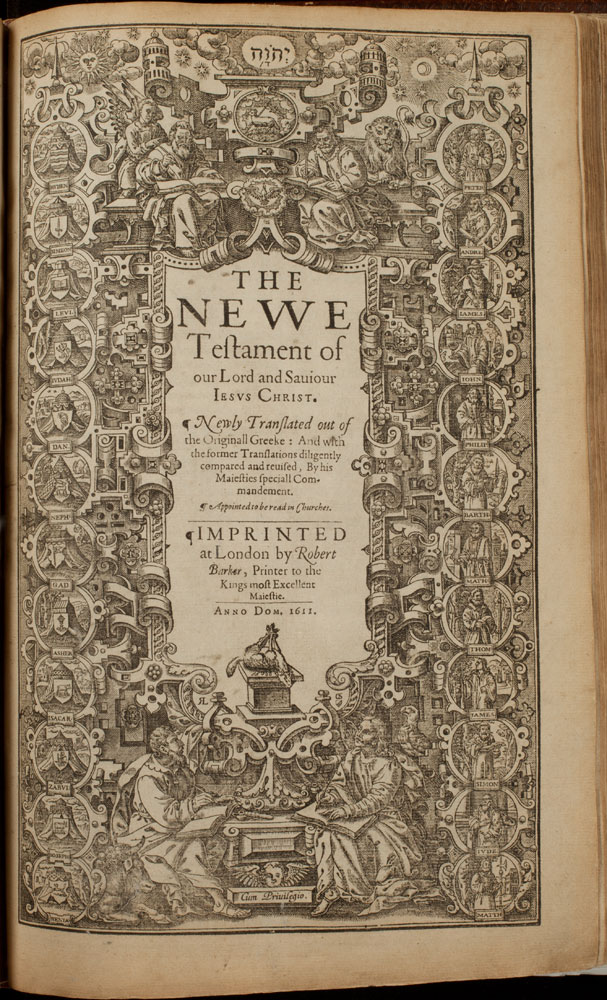The King James Bible
A number of typographical errors appeared in the 1611 printing of the King James Bible. One of the best known is in Ruth 3:15, which reads "he went" where the context calls for "she went." This error was corrected in the 1613 reissue of the Bible. The two printings are referred to as the "He Bible" and the "She Bible." In 1613 the type was completely reset and the text was reprinted, but the title pages from the 1611 printing were added to the sheets, which is why bibliographers refer to the "She Bible" as a first edition, second issue.
Robert Barker received no payment for printing the King James Bible from the King, Parliament, or the Church of England; instead, Barker took on a number of financial partners to assume the cost of producing the Bible. The expenses he incurred included the casting of new types, paper and ink, and most costly of all, labor. Each copy of the Bible used 366 sheets of paper, folded so as to produce four printed pages. The pages were gathered into 123 signatures of six leaves each, which were then then arranged and sewn together.
The King James Bible was printed in a large format because it was designed to be read aloud in churches. Besides the Old Testament, New Testament, and Apocrypha, it contains ecclesiastical calendars and other material pertinent to managing church services.
